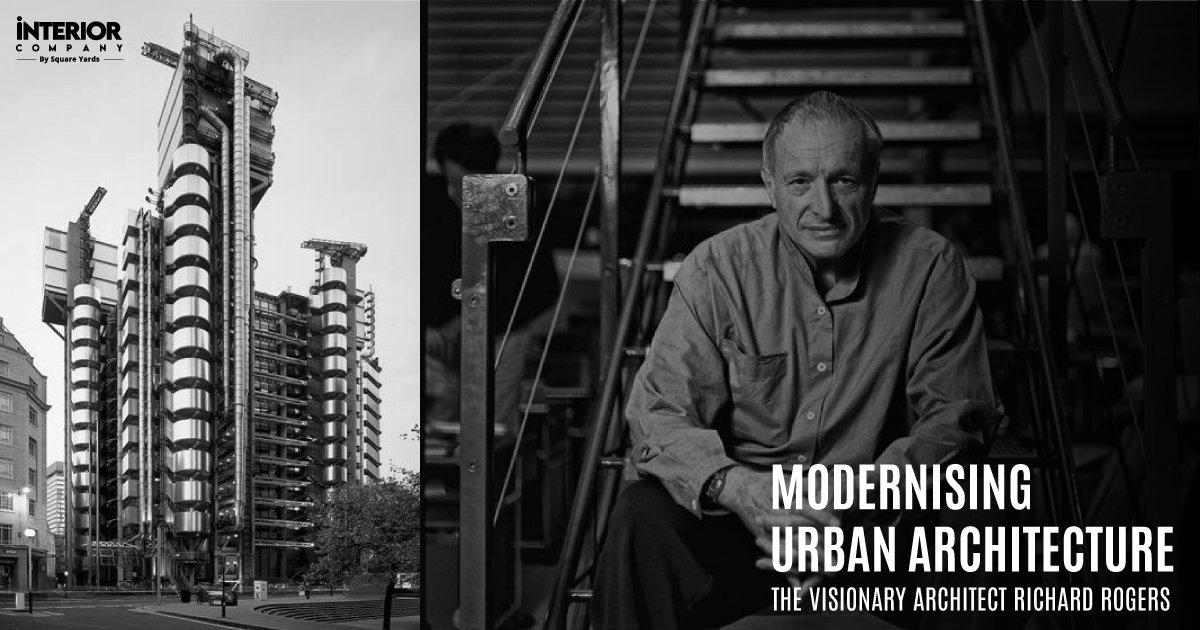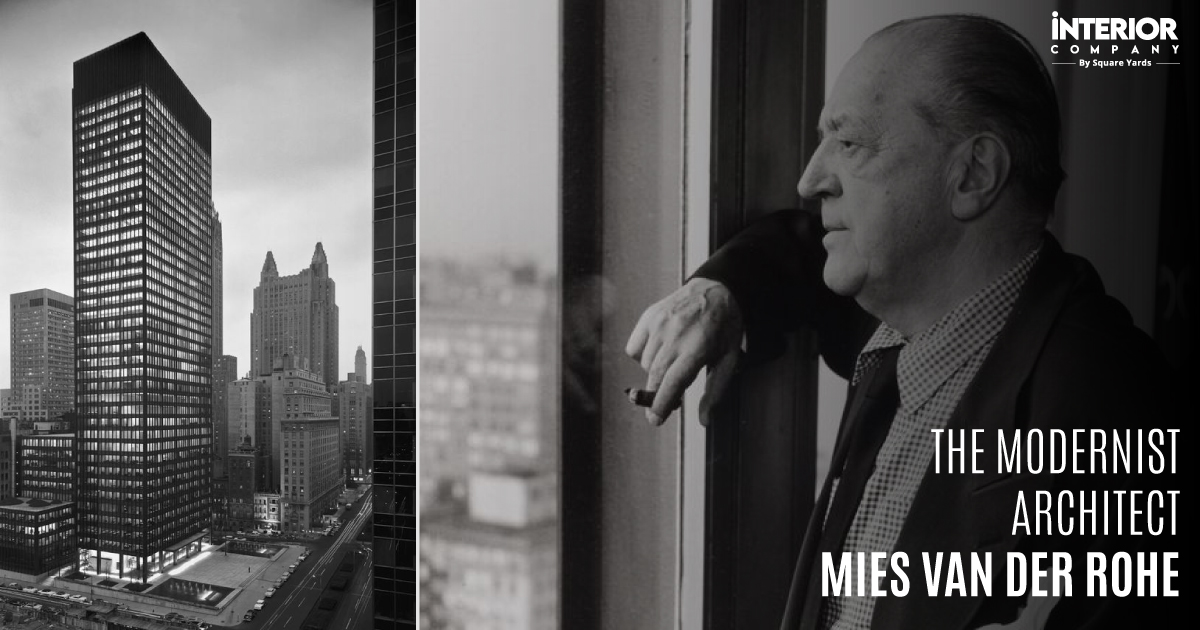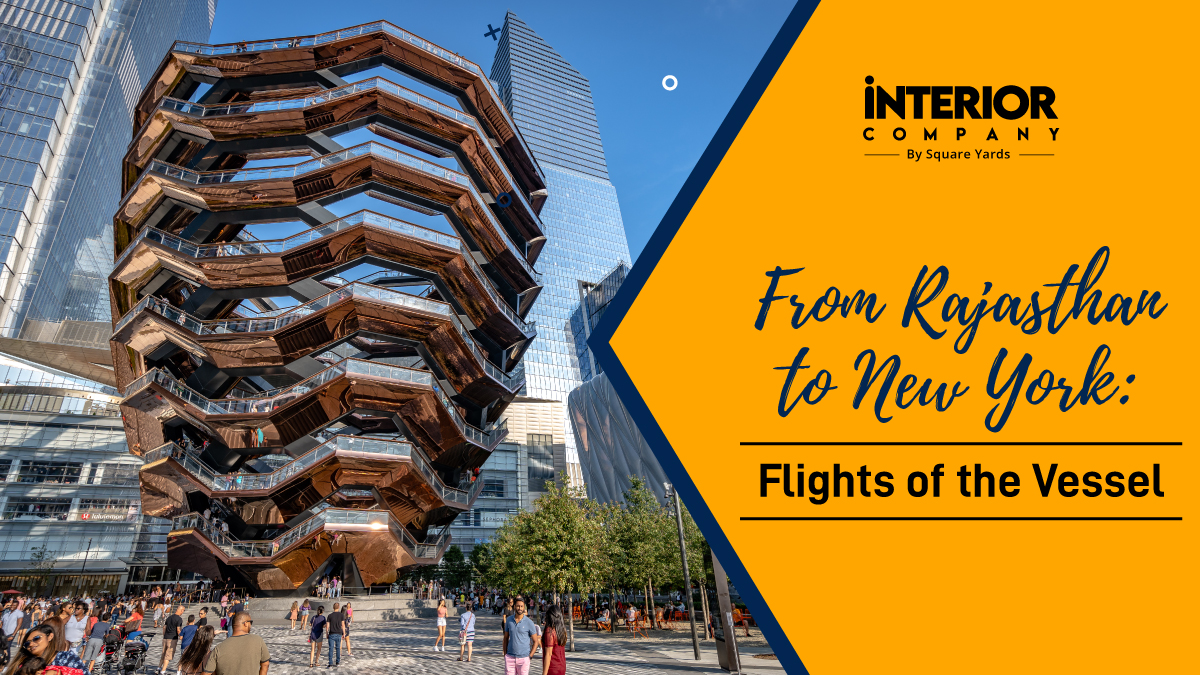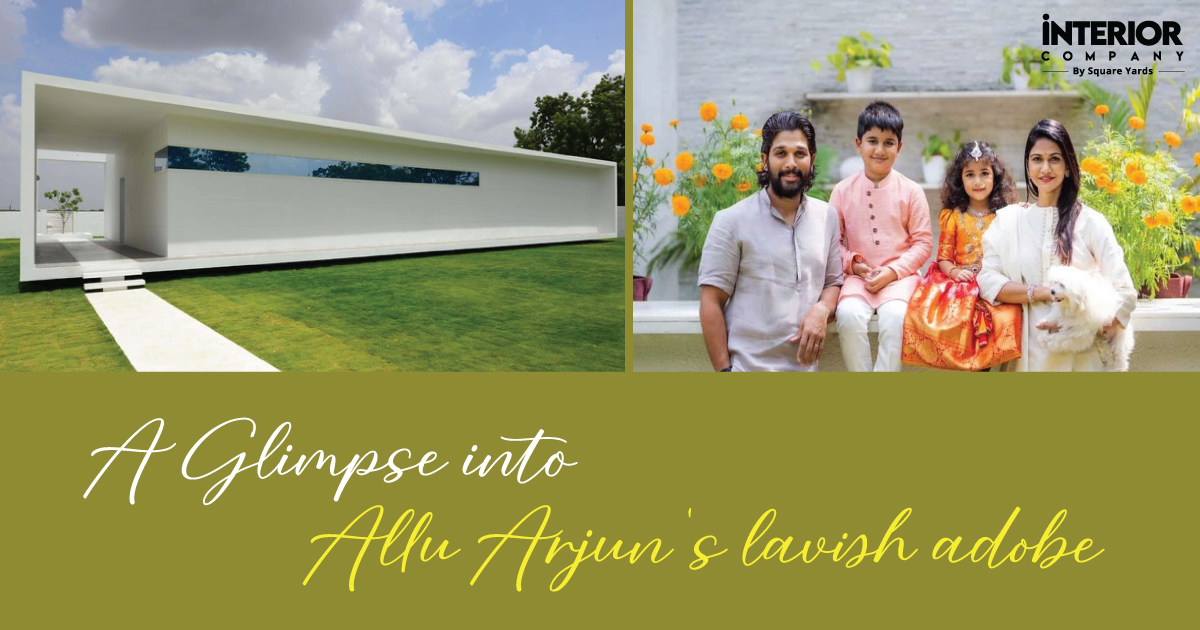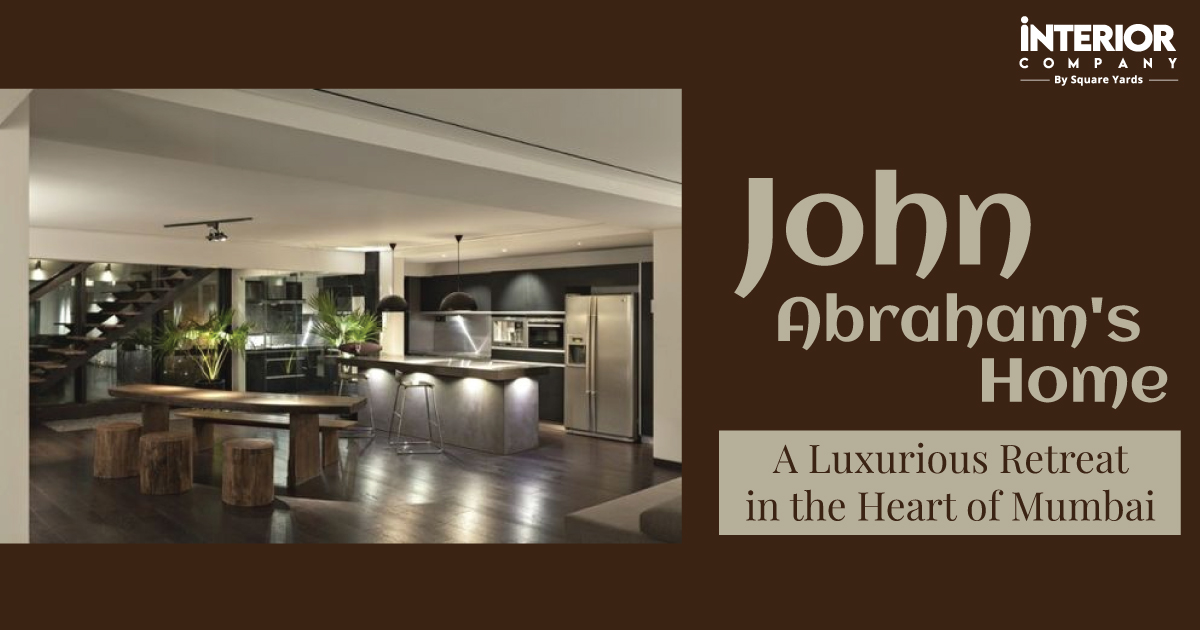- Kitchens
- Design Ideas
- Cities
- Trends
- Guides
- Price Calculators
- Our PortfolioNEW
- More
- Home
- Trends
- Architecture
- Architects
- Le Corbusiers Architecture
Explore Le Corbusier’s Works- The Man Behind the Modernist Movement
“Architecture is the learned game, correct and magnificent, of forms assembled in the light”
Almost a century has gone by since Charles-Édouard Jeanneret, better known as Le Corbusier, was born. This eccentric personality was considered arguably the most brilliant and controversial architect of the modern 20th century.
Table of Content
Le Corbusier’s incredible designs are testimony to his groundbreaking ideas and trademark style, including geometric forms, modest facades, asymmetrical compositions, and maximising spaces with open plans and natural light. He strongly advocated the intervention of modern architecture and injected the use of industrial materials, a neutral colour palette and minimalist decor.
Source: Pinterest
The Modulor- An anthropometric scale of proportions devised by the Architect.
The architect designed more than 300 buildings whilst being a factious urban planner, talented writer, theorist, furniture designer, sculptor and painter. The architectural works of Le Corbusier can be seen in almost any city worldwide, with UNESCO naming 17 of his projects as World Heritage sites.
Also Read: Greek Revival Architecture
Le Corbusier’s Famous Buildings Around the World
Below are some of his significant works that embrace modernity, technology, and innovation.
Villa Savoye Le Corbusier
Source: Pinterest
Located- Poissy, Paris
Completed- 1929
Villa Savoye is a modernist masterpiece designed by Le Corbusier and his cousin Pierre Jeanneret as a weekend holiday retreat for the Savoye family. The house was a prominent example of his International Style that encapsulates Le Corbusier's 5 points of architecture. These include 'Pilotis', or columns, that lift up the base of buildings; open-plan interiors; long, elongated windows for light and ventilation; a free facade independent of the load-bearing structure; and a flat roof that serves as a garden or terrace.
Le Corbusier believed that 'A house is a machine for living.' This is expressed through simple, streamlined design weaved with innovative techniques; a modern approach to maximise efficiency and minimalist decor. Villa Savoye is one of the most impressive and influential Le Corbusier works, listed as a UNESCO World Heritage Site.
Notre Dame du Haut
Source: Pinterest
Location- Ronchamp, Paris
Completed- 1954
An iconic design that arouses emotions in the user and inflates unforgettable experiences is the small Catholic chapel in Ronchamp, France- Notre Dame du Haut. The stark white walls, the soaring ceiling, and the different-angled windows create an ethereal atmosphere.
It was built on a pre-existing pilgrimage site, which was demolished during the Second World War. Unlike previous Le Corbusier buildings, the chapel is a paradigm shift from his boxy, functional volumes to irregular and curved structural forms. Although, it entails some principles of openness and communal sense in context with the religious site.
The most striking element of the design, however, is the monumental curved roof. It is supported by embedded columns in the walls which create a 10cm gap, allowing a sliver of light to cascade into the interiors.
Also Read: Humanitarian Architecture by First Female Architect in Pakistan
Unite d'Habitation
Source: Pinterest
Location- Marseille, France
Completed- 1952
The famed architect, Le Corbusier, described the building as a Vertical Garden City that successfully accommodated 1600 residents with their own private spaces, including shopping streets, a hotel, a club, a kindergarten, a gym, and a rooftop terrace. It was the first multi-family residential housing project which centred around communal living for its inhabitants- a place to shop, live, and play.
The first of its kind, Unite d’Habitation has become a blueprint for public housing projects around the globe- A city within a city, that bestows a brutalist style of architecture with its ingenious approach and use of beton-brut concrete (rough-cast concrete).
Heidi Weber Museum
Source: Pinterest
Location- Zurich, Switzerland
Completed- 1967
The vibrant Le Corbusier Museum is the final project built by the pioneer architect before his death in 1965. Nestled on a grassed area by the shore of Lake Zurich, this renowned structure features a floating steel roof and Rubik's cube-esque coloured panels, the Pavilion exhibits Le Corbusier’s famous works.
In 1960, Heidi Weber, a popular interior designer and enthusiastic supporter of Le Corbusier, asked him to build her a small home that would also serve as space to showcase his impeccable artworks as an artist, sculptor, and architect. The building design diverges from this original style i.e. concrete and stone. Instead, it embraces steel, glass, modularity, and prefabrication. The monument pays homage to this great man and his enduring imagination.
Le Corbusier Architecture in India
Source: Pinterest
Le Corbusier was invited by Pt. Jawaharlal Nehru, the then Prime Minister of India, to carry out the development plan of a new city that exudes modernism and socio-economic independence. That’s precisely how Chandigarh came to fruition- a fresh perspective on Indian architecture. As the country was recovering from Independence, Nehru's wishes were that- “The city should be a symbolic expression of the nation's faith in the future.'
Source: Pinterest
Chandigarh became an iconic example of modern urban planning in India, embodying features like multilayered roads, residential sectors, pedestrian walkways, and landscaping. These elements were enveloped together, with Le Corbusier’s intelligent approach and guiding force, providing comfortable living and enhancing the physical and mental well-being of the citizens.
Source: Pinterest
Le Corbusier introduced the use of exposed concrete, rectilinear forms, unadorned facades, and minimalistic designs breaking the monotony of the past with a completely new aesthetic in Indian architecture. The architectural work of Le Corbusier heavily influenced the aspiring architects of that era, including Achyut Kanvinde, Balkrishna Doshi and Charles Correa, who followed his ideologies and progressive visions in modern society. Below are the two iconic examples of Le Corbusier works in India.
Palace of Assembly
Source: Pinterest
Location- Capitol Complex, Chandigarh, India
Completed- 1963
The Palace of Assembly is a third structure of the Capital Complex, which is known for its groundbreaking architecture. The building was designed in context with the Indian climate by incorporating sun-shielding features like brise-soleil and double-skin roofs that seamlessly blended into the facade to constrain the effects of solar radiation. Other essential features include openings, reflecting pools, and terraced gardens, inciting an environmentally responsible approach to architecture.
Mill Owners' Association Building
Source: Pinterest
Location- Ahmedabad, India
Competed- 1954
Situated on the banks of the Sabarmati River in Ahmedabad, The Mill Owners' Association Building is one of the noted Le Corbusier structures that catapulted the growth of modern Indian architecture. Constructed in 1954, the design of the building characterises the elements of Le Corbusier’s 5 points of architecture. The facade stands free of the structural columns, and the angular forms obstruct the direct sunlight while allowing the breeze from the river to pass through the building. The lush surroundings and integrated foliage enrich the atmosphere, bringing warmth and comfort.
Visionary Architect
The famed architect was quite ahead of his time and understood the futuristic notion of architecture, crafting spaces that harmonise human needs and foster socio-cultural growth. Le Corbusier left an esteemed legacy and a vast canvas for architects and designers to explore and learn.
Patrick Nuttgens in his book 'Understanding Modern Architecture,’ noted that
'The influence of Le Corbusier is so colossal, so worldwide, it has effectively shaped not only the architecture of our world but also the realms of invention and culture.'
*Images used are for illustration purposes only. Interior Company does not hold any copyright to the images unless mentioned explicitly
Ready for a home transformation?
Let our designers assist you!
Recent Posts
Charles-Edouard Jeanneret-Gris, popularly known as Le Corbusier was born in the Swiss city of La Chaux-de-Fond. An architect, urban planner, and designer, Le Corbusier was one of the pioneers of modern architecture and is regarded as the most influential architect of the 20th century.
Le Corbusier’s most noted buildings include the Villa Savoye in Poissy, France; the Unité d’Habitation in Marseille; the Notre-Dame-du-Haut in Ronchamp, and the Capitol Complex in Chandigarh, India.
UNESCO has added 17 architectural works of Le Corbusier to the World Heritage list spanning across seven countries.
Related Category
- Buildings and Monuments
- Celebrity Homes


